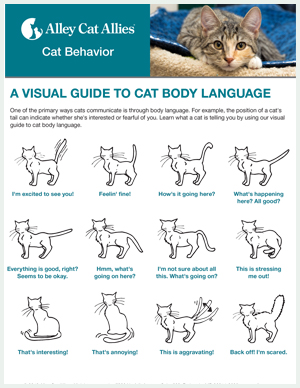Pulse of Information
Stay updated with the latest news and insights.
Whisker Whispers: Decoding Your Cat's Quirky Habits
Unravel the mystery of your cat's quirky habits! Discover the secrets behind their behaviors and deepen your bond with your feline friend.
Understanding Cat Purrs: What Does Your Feline Friend Really Mean?
Understanding cat purrs can be a delightful yet perplexing journey for any cat owner. While many people associate the sound of purring with contentment, cat purrs can actually convey a range of emotions and messages. For instance, a cat may purr when it is relaxed, but it can also purr when it is in pain or feels threatened. This makes it essential for pet owners to tune into their feline friends' body language and overall behavior to accurately interpret what their purring means.
Researchers suggest that the frequency of cat purrs has healing properties, which may explain why cats often purr when they are injured or unwell. This phenomenon raises questions about whether purring serves as a self-soothing mechanism for cats, helping them to cope with stress or recovery. As you learn to understand your cat's unique vocalizations and accompanying behaviors, you'll develop a deeper bond with your furry companion and gain insights into their emotional well-being.

Why Does My Cat Bring Me 'Gifts'? Unraveling the Mystery
When your cat drops a gift at your feet, it can spark a mix of emotions ranging from confusion to humor. Understanding the motives behind this behavior can help you appreciate your feline friend even more. Cats are natural hunters, and by bringing you their catches, they display their hunting prowess and bond with you. This act is often seen as a way of sharing their 'findings' and demonstrating their affection. In essence, it’s a gesture of love, as they consider you a part of their family, and sharing their prey is akin to sharing a meal.
Additionally, your cat may be expressing its instinctive need to teach you how to hunt. In the wild, mother cats often bring their kittens gifts to help them learn essential survival skills. By presenting you with these 'offers,' your cat might be attempting to instruct you in the ways of the wild, believing you could use some help with your hunting strategies. To your furry companion, this behavior is not just play; it’s a serious and loving role in their life. So, the next time your cat surprises you with a 'gift', remember it's their way of saying they care about you and want to strengthen your bond.
Decoding Cat Kneading: What Your Kitty's Behavior Says About Them
Cat kneading, often referred to as 'making biscuits,' is a common behavior exhibited by felines. This action typically involves your kitty rhythmically pushing their paws in and out against a soft surface, such as your lap or a cozy blanket. Although it might seem peculiar, kneading can be traced back to kittenhood, as mother cats knead their kittens to stimulate milk flow. As adult cats, this behavior can signify a sense of comfort and security, revealing a strong bond between you and your furry friend. Understanding the reasons behind this behavior can deepen your connection and enhance your overall experience as a cat owner.
In addition to expressing contentment, cat kneading may indicate that your cat is marking their territory. Cats possess scent glands in their paws, and by kneading, they leave their scent on their surroundings, effectively claiming their space. If your kitty kneads with particular enthusiasm or does so often, it could also signify stress relief or a self-soothing mechanism. Paying attention to the context of the kneading—whether it occurs during relaxation, play, or moments of anxiety—can provide valuable insights into your cat's emotional state and needs.